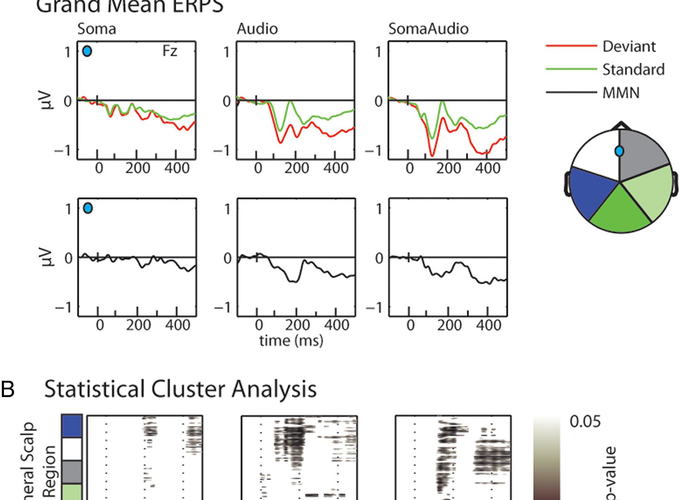Multisensory Representation of Frequency across Audition and Touch; High Density Electrical Mapping Reveals Early Sensory-Perceptual Coupling
Abstract
The frequency of environmental vibrations is sampled by two of the major sensory systems, audition and touch, notwithstanding that these signals are transduced through very different physical media and entirely separate sensory epithelia. Psychophysical studies have shown that manipulating frequency in audition or touch can have a significant cross-sensory impact on perceived frequency in the other sensory system, pointing to intimate links between these senses during computation of frequency. In this regard, the frequency of a vibratory event can be thought of as a multisensory perceptual construct. In turn, electrophysiological studies point to temporally early multisensory interactions that occur in hierarchically early sensory regions where convergent inputs from the auditory and somatosen- sory systems are to be found. A key question pertains to the level of processing at which the multisensory integration of featural information, such as frequency, occurs. Do the sensory systems calculate frequency independently before this information is combined, or is this feature calculated in an integrated fashion during preattentive sensory processing? The well characterized mismatch negativity, an electrophysiological response that indexes preattentive detection of a change within the context of a regular pattern of stimulation, served as our dependent measure. High-density electrophysiological recordings were made in humans while they were presented with separate blocks of somatosensory, auditory, and audio-somatosensory “standards” and “deviants,” where the deviant differed in fre- quency. Multisensory effects were identified beginning at 200 ms, with the multisensory mismatch negativity (MMN) significantly different from the sum of the unisensory MMNs. This provides compelling evidence for preattentive coupling between the somatosensory and auditory channels in the cortical representation of frequency.
